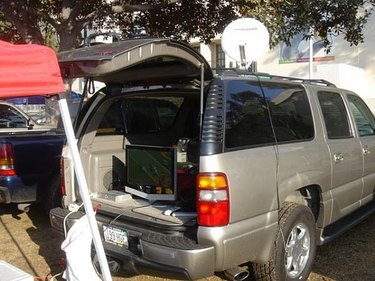
Did you know that you can setup your DirecTV or Dish Network satellite TV system almost anywhere? Yes it is an amazing concept! You can take it camping, tailgating, or to your vacation/second home. You will need a DirecTV or Dish Network subscription, a portable satellite dish, power, a satellite receiver and a TV. There is nothing like being able to watch ESPN College Gameday while you tailgate for 5 hours before a game.
Step 1
Signup for DirecTV or Dish Network or ask a friend if you can borrow one of their satellite receivers. You will need an active DirecTV or Dish Network account and receiver in order to proceed. I recommend getting your own subscription to DirecTV or Dish Network if you are planning to do a lot of camping and tailgaiting throughout the year.
Video of the Day
Step 2
Determine where you will be using your satellite TV system (outside of it's main and intended location at your house) so you can purchase the proper equipment. You will need to make sure you have a power source and a portable satellite dish. You can setup your system in the most remote places but you need to be able to get a satellite signal and power for the TV and satellite receiver.
Step 3
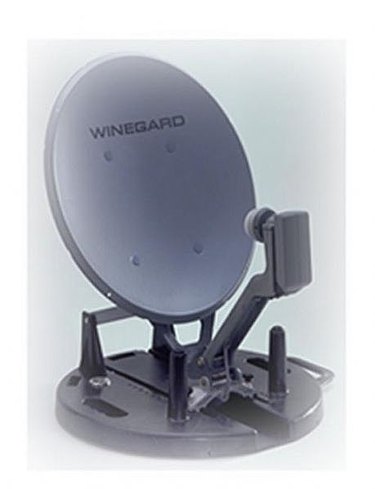
Purchase a portable satellite dish. When purchasing a satellite dish you need to make sure 1) you buy a dish that is compatible with your DirecTV or Dish Network system, 2) you buy a dish that has a stand of some sort (stands are not included with traditional satellite dishes since they are meant to be mounted on a roof or some place on a building) and 3) it has coaxial cables connected to it (you can have multiple feeds coming off of the satellite). I recommend going to an RV supply store and picking up a table top or car top portable dish. These dishes come with a stand and compass and the whole unit folds down into a flat, easy to carry device. You can also purchase dish tripods at Radio Shack. These allow you to mount a traditional satellite dish on top a tripod that you can put on the ground or on top of a truck bed or other elevated platform.
Step 4
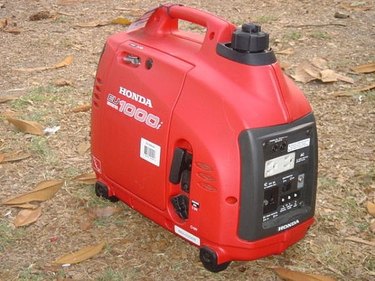
Get Power. You can use your car battery, a dedicated battery powered external power source or a gas powered generator as your power source. If you plan to be using the system for over 3 to 4 hours you may want to invest in a dedicated battery power supply or a gas powered generator so you do not wear down your car battery. If you do decide to use your car battery you will need an adapter that hooks up to your car battery and provides normal electrical outlets for you to plug things into. This is called a power inverter. In addition to it acting as an adapter it also converts the DC current from your car battery into conventionl AC electricity for your electronics devices (TV, satellite receiver).
Step 5
Setup on location. Once you get to your location you need to make sure your dish has clear line of sight to the sky. Make sure there are not too many trees or buildings that will interfere with your signal.
Step 6
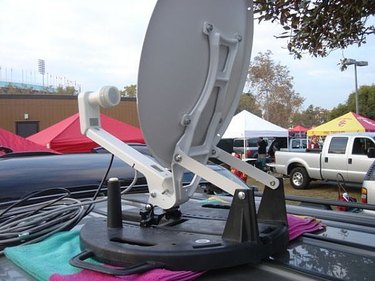
Put the dish on top of your car, a table or on a tripod (depending on what type of portable dish system you bought). Again, make sure you have clear line of site to the sky. Run the satellite coaxial cable to the area where your TV will be. You will point the dish later once the TV and satellite receivers are powered up.
Step 7
Start your generator if you have one. It is best to put the generator as far from the TV viewing site as possible so the noise and fumes are not near you and your guests. If you are using your car battery and inverter set that up at this time.
Step 8
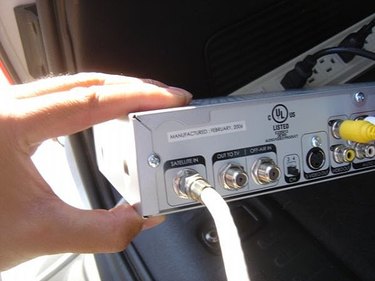
Connect the satellite dish to the satellite receiver by putting the coaxial cable from the satellite feed into the "satellite in" connection on the receiver. Plug the receiver into the power supply.
Step 9
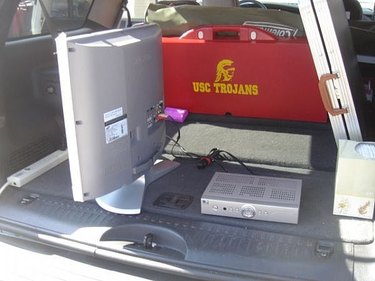
Connect your TV to the satellite receiver. It is best to use RCA connectors, red, yellow and white. Plug those into your receiver and then into one of the corresponding inputs on your TV. Connect the TV to the power supply.
Step 10

Now that everything is connected you can start the on screen setup. Turn everything on and switch the TV to the proper input so you can see the DirecTV or Dish Network startup screen. It should say something like "searching for satellite signal" (I am using DirecTV as the example here, Dish Network's on screen setup will be different).
Step 11
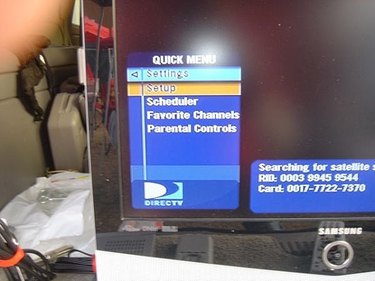
Using your remote hit the "Menu" button to bring up the settings screen. Use the arrow keys down and highlight "setup" and click OK.
Step 12
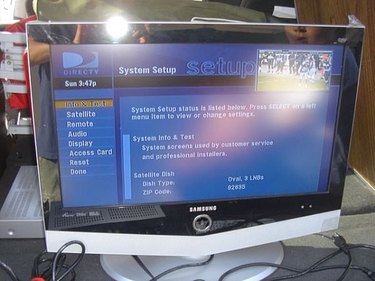
After you click ok the setup main screen will appear with various options on the left hand side.
Step 13
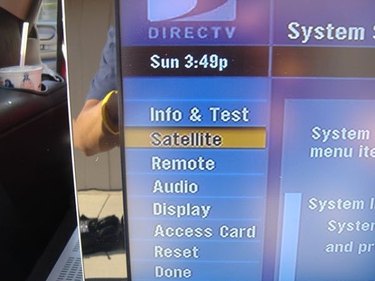
Highlight "satellite" and click OK. This will bring up the satellite configuration main screen.
Step 14
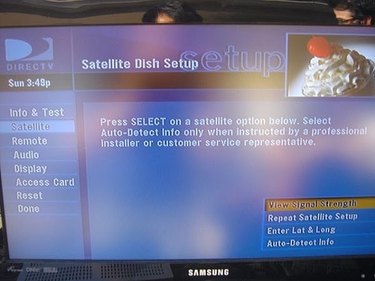
Using your remote select "view signal strength" and click OK
Step 15

Now select "signal meters" and click OK. This will take you to a screen where you can view your current signal strength.
Step 16
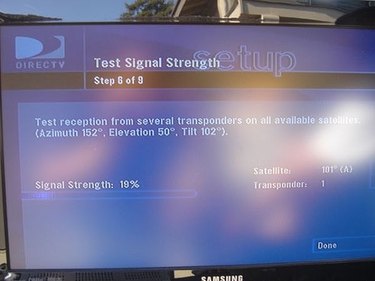
Once you get to test signal meters screen you should turn the volume of your TV set up where you can hear it. The on screen meter will show you graphically how strong your signal is but the TV should also make a beeping sound to help you know if you are getting close. The faster and more frequent the beeps the closer you are getting to having a strong enough signal.
Step 17
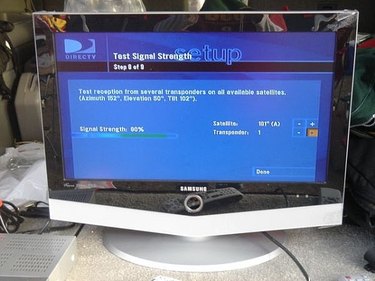
Once you get over 80% your signal will be strong enough.
Step 18
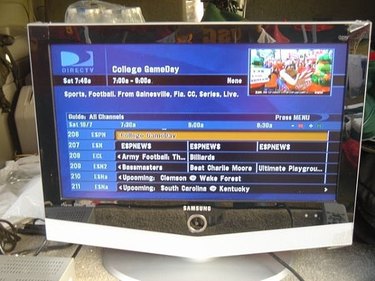
Now that you have a strong enough signal you can go to the on screen guide to select the channel you want to watch. To exit the screen you are in select "done" on screen and then exit the setup menu. On your remote click "guide" and your channel guide should come up just like it does at home.
Step 19
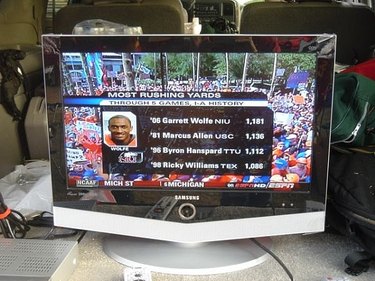
Now that you can now browse all of the channels that you normally would at home, pick one and enjoy! Congratulations, you have successfully setup your satellite TV system!
Video of the Day